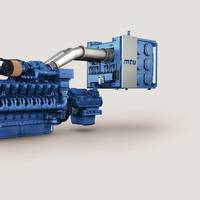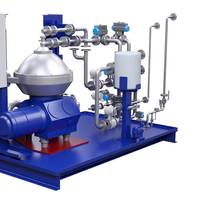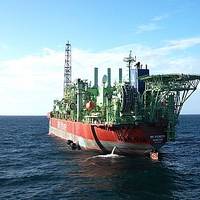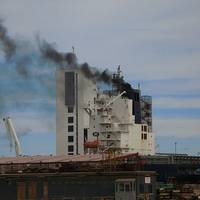North American Lobster Industry Confronts 'Ropeless' Traps After Whale Entanglements

An emerging technology to fish for lobsters virtually ropeless to prevent whale entanglements is exciting conservationists, but getting a frigid reception from harvesters worried it will drive them out of business and upend their way of life.Injuries to endangered North Atlantic Right Whales ensnared in fishing gear have fueled a prominent campaign by environmental groups to pressure the industry to adopt on-demand equipment that only suspends ropes in the water briefly before traps are pulled from the water.The Monterey Bay Aquarium’s Seafood Watch…
Rolls-Royce Gains EPA Tier 4 Certification for mtu Marine Propulsion Systems

U.K.-based equipment and engines manufacturer Rolls-Royce said it has received U.S. EPA Tier 4 certification for its mtu propulsion systems based on its Series 4000 M65L 16-cylinder diesel engines.EPA Tier 4 regulations are considered the most stringent emissions standard for marine applications, requiring the propulsion system to have very low particulate and nitrogen oxide emissions throughout its lifecycle."This means we have climbed to the king's class of emissions regulations with our engines for yachts and commercial vessels…
Alfa Laval PureNOx Prime Ordered for Five VLECs

Alfa Laval’s new PureNOx Prime solution for water treatment in Exhaust Gas Recirculation (EGR), will be part of EGR systems on five very large ethane carriers (VLECs) to be operated by United Ethane Carriers (UEC). This order from MAN Diesel & Turbo comes only a short time after PureNOx Prime was introduced to the market. UEC, a joint venture between Jaccar Holdings and Hartmann Group for the commercial management of ethane carriers, will be the operator of five VLECs to be built for ship owner JHW Engineering & Contracting.
Boxship's Bottom Line Battered Further by Fuel Rules
Container shipping firms' annual costs have risen by a total $500 million due to new sulphur emissions regulations that have forced vessels to use higher cost fuel, the OECD said in a report on Thursday. Rising fuel costs will further hurt an industry already stung by overcapacity, low demand and falling rates. From January 2015, ships entering Emissions Control Areas from the Baltics to the North American coast had to switch to ship fuels with less than 0.1 percent sulphur content, from 1 percent, as part of a campaign to combat marine pollution. An even lower cap of 0.50 percent is planned for 2020 and it could add annual total costs of around $5 billion to $30 billion for the container shipping industry, the Organisation for Economic Co-operation and Development (OECD) report said.
China Ramping Up Ship Emission Controls
China will introduce tough controls on ship emissions at three key port areas from January to reduce sulphur dioxide which results in acid rain, causing respiratory difficulties and sometimes premature death, said the Ministry of Transport. If strictly implemented the move would force oil suppliers to increase the supply of cleaner marine fuel, industry experts said. The ministry gave no details on how the new emissions rules would be enforced or penalties for non-compliance. The new rules will apply to merchant ships navigating or anchoring in the waters of Pearl River Delta, Yangtze River Delta and the Bohai Bay rim, with a goal to cut sulphur dioxide by 65 percent by 2020 from the 2015 level, according to a document issued by the Ministry of Transport.
USCG Alert: Compliance with MARPOL Requirements
The Coast Guard has confirmed several reports it has received stating that main engines may not attain the expected speed when using ultra low sulfur fuel oil. The Coast Guard has revised its list of recommendations to vessel owners and operators about the importance of establishing effective fuel oil changeover procedures to comply with MARPOL Annex VI emission regulations. Ensure fuel oil switching is accomplished outside of busy traffic lanes and the ECA. Generally the ECA is 200 nm from the North American Coast and 50 miles from the U.S. Caribbean coast (e.g., the Commonwealth of Puerto Rico and the U.S. Anticipate that there may be many technical challenges for operators when beginning to use ULS fuel oil as a matter of routine and compliance.
Bechtel to Design America's First FLNG
The first U.S.-based floating liquefied natural gas vessel (FLNGV) moved closer to reality after engineering giant Bechtel agreed to design and engineer the project. Bechtel has been selected by Delfin LNG, a wholly-owned subsidiary of Fairwood Peninsula Energy, to perform front-end engineering and design for the floating FLNGV to go into service at Port Delfin. Port Delfin is a proposed deepwater port and floating LNG facility that will be located approximately 50 miles off the coastline of Cameron Parish, Louisiana. Delfin LNG’s project will be the first offshore floating natural gas liquefaction facility in the United States, Bechtel said in a statement on Tuesday.
Bechtel Wins Contract for US' First FLNG Facility
Bechtel announced it has been selected by Delfin LNG, a wholly-owned subsidiary of Fairwood Peninsula Energy Corporation, to perform front-end engineering and design for the first U.S.-based floating liquefied natural gas vessel (FLNGV) to go into service at Port Delfin. Port Delfin is a proposed deepwater port and floating LNG facility that will be located approximately 50 miles off the coastline of Cameron Parish, La. Delfin LNG's project will be the first offshore floating natural gas liquefaction facility in the United States. Upon the final investment decision, Bechtel is expected to design, build and commission the FLNGV. Frederick Jones…
Japanese Tsunami Debris Still Washing on US Shore
Debris from Japan's 2011 tsunami will continue to litter the North American coastline over the next three years, with everything from refrigerators to lumber and sports balls still floating offshore in the Pacific, an expert said on Tuesday. About one million tons of debris was still lingering in the Pacific Ocean four years after a magnitude 9.0 earthquake, the most powerful ever recorded in Japan, set off a series of massive tsunami waves that devastated a wide swathe of Honshu's Pacific coastline and killed nearly 20,000 people. It also damaged the Fukushima Daiichi nuclear plant, leading to a series of explosions and meltdowns in the world's worst nuclear disaster since Chernobyl 25 years earlier.
USCG Marine Safety Alert
The U.S. Coast Guard issued a marine safety alert today to remind vessel owners and operators to establish effective fuel oil changeover procedures during efforts to comply with MARPOL Annex VI emission regulations. The USCG said that several recent incidents of fuel leakages during changeovers prompted the alert. The USCG cited multiple unspecified incidents involving substantial machinery space fuel leakages that occurred while vessels were switching fuel oil to ultra low sulfur (ULS) fuel oil to ensure compliance with MARPOL Annex VI, Regulation 14.3.4. The new regulations, which came into effect on January 1, lowered maximum fuel sulfur content from 1.0% to .10%.
Record 40,000bpd from Cascade and Chinook

According to Petrobras, production at Cascade and Chinook fields hit 40,000 barrels per day (bpd) on March 4, 2014, a new output record for these oilfields. Cascade has 3 wells in operation and Chinook 2 wells. The record levels were achieved by bringing on stream two new wells, Chinook-5 and Cascade-6, contributing a further 28,000 bpd to the previous output of 12,000 bpd. Cascade and Chinook are located some 260 km south of the Louisiana coast and 24 km apart, at a water depth of 2,500 meters.
Marine Diesel Oil Price-Spike Expected End of 2014

Reuters – New fuel rules for ships entering low sulphur zones around northwest Europe and North America next year could trigger a price spike in European gasoil, whilst refiners will struggle to offload unwanted fuel oil. From January 2015, ships entering "Emission Control Areas" (ECAs) in the Baltic, North Sea and English Channel and around the North American coast, will have to switch from low sulphur fuel oil (LSFO) with 1 percent sulphur content to 0.1 percent gasoil, in a crackdown on marine pollution.
New Fuel Rules Could Prompt Gasoil Price Spike
New fuel rules for ships entering low sulphur zones around northwest Europe and North America next year could trigger a price spike in European gasoil, whilst refiners will struggle to offload unwanted fuel oil. From January 2015, ships entering "Emission Control Areas" (ECAs) in the Baltic, North Sea and English Channel and around the North American coast, will have to switch from low sulphur fuel oil (LSFO) with 1 percent sulphur content to 0.1 percent gasoil, in a crackdown on marine pollution. Industry experts believe shipowners will opt for gasoil rather than using exhaust filter systems known as scrubbers or alternative fuels such as liquefied natural gas (LNG), because of high investment costs, long payback times, and the lack of suitable port infrastructure.
Navy to Unveil New Maritime Strategy
The U.S. Navy will unveil a new maritime strategy next month that will address the demands of a globalizing world, a top military official said Sept. 27. Vice Adm. John G. Morgan Jr., Deputy Chief of Naval Operations for Information, Plans and Strategy (N3/N5), spoke to a group gathered at the Ronald Reagan Building for a conference on National Security Strategy and Policy. He told the audience that during the International Seapower Symposium next month in Newport News, Va., the Navy will present a new maritime strategy to some 91 heads of allied navies, Marines and coast guards. The doctrine, which took some 16 months to complete, is the Navy's first attempt to document a seapower strategy since the 1980s.
KVH Wins 4 NMEA Awards Again
For the second year in a row, two communications systems and two navigation products from KVH Industries, Inc. have earned "best product" awards from The National Marine Electronics Association (NMEA). TracVision 3, a new 1999 system based upon last year's award-winning TracVision II, was voted Best Satellite Television System, and Tracphone 25 was again named Best Satellite Telephone System. The company's new Azimuth GyroTrac was named Best Gyro Compass and the Azimuth 1000 was once again voted Best Electronic Compass. TracVision 3 is unique in that it combines proprietary orientation sensor and antenna pointing technologies to deliver impressive satellite tracking performance.





